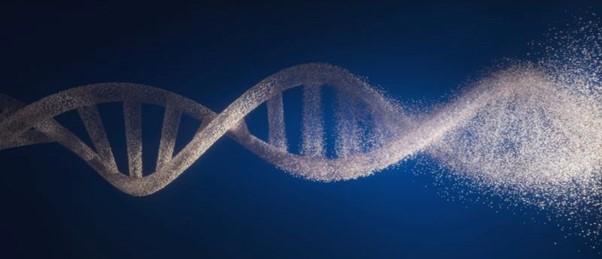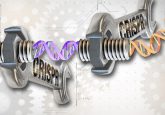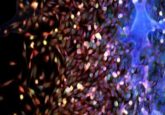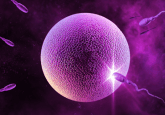Evolution and fertility: the true impact of transposons

The first transposon that can determine survival in mammals has been identified, raising questions about evolution and fertility in the class.
Transposons are DNA sequences initially incorporated into genomes as viral DNA and frequently overlooked in genetic research due to their noncoding status and position within the vast regions of ‘junk DNA’ that account for 98% of the genome. A recent study, led by Lin He (University of California, Berkley, CA, USA) and Ting Wang (Washington University, MO, USA), has identified the first sequence of junk DNA that can determine survival in mammals. The findings have interesting implications for evolution and fertility research.
This research was built on a discovery that He and her team stumbled across in a study 5 years ago; a microRNA that regulates the MERVL family of transposons was found to be involved in the determination of cell fate for early mouse embryos. Surprised by this finding and the abundance of transposon transcripts in the embryos led He to examine the potential developmental role of transposons.
Confirming cruciality with CRISPR
The team successfully identified the region of DNA responsible for the cell fate determinism: a section of transposon named MT2B2, repurposed by the mouse genome as a promoter of the gene Cdk2ap1. This gene is involved in cell proliferation and the timing of uterine implantation for embryos. Promotion of the gene’s transcription by MT2B2 leads to the production of a truncated isoform of its product protein. The short isoform promotes cell proliferation and accelerates the implantation of the embryos, while seemingly encouraging the regular spacing of embryo implantation within the uterus.
To test the role of this promoter, the team excised it using CRISPR-EZ technology, resulting in the stimulation of the gene’s expression by an alternate promoter. This resulted in the expression of a longer isoform that decreased cell proliferation and delayed implantation. With less of the truncated isoform present after the knockout of MT2B2, the cells displayed decreased proliferation and took longer to implant, while also implanting more sporadically.
 Infographic: Transforming drug discovery with single-cell CRISPR screens
Infographic: Transforming drug discovery with single-cell CRISPR screens
Deepen your characterization of gene function and disease pathways to inform earlier decisions, narrow in on impactful targets, and accelerate novel therapeutics to clinical studies with confidence.
Due to these changes, encouraging crowding of the embryos and limited development, almost half of the MT2B2 knockout pups were stillborn. The sporadic nature of embryo implantation even threatened the mothers as some embryos were implanted over the cervix and blocked the exit of fetuses.
Transposons and evolution
To assess the conservation of these observations throughout mammals and, therefore, their potential relevance to human biology, the team scoured existing data from single-cell RNA sequencing studies of preimplantation embryos from eight different mammals, including humans. This search revealed that each species had its own version of MT2B2 that was fleetingly transcribed prior to implantation.
In almost all of the species examined, short and long isoforms of the Cdk2ap1 product protein were observed. What varied notably between species was the timing and the extent each isoform’s expression. First author Andrew Modzelewski (University of California, Berkley) noted the impacts of these changes, stating that, “If you have a lot of the short Cdk2ap1 isoform, like mice, you implant very early, while in species like the cow and pig, which have none to very little of the short isoform, it’s up to two weeks or longer for implantation.”
This highlights the potential role of these transposons in the evolution of mammals, as Wang believes that MT2B2 may have been introduced into mice by a virus, replacing the original promoter that kicks in when MT2B2 is knocked out. “So, what happened here is a rodent-specific virus came in, and then somehow the host decided, ‘OK, I’m going to use you as my promoter to express this shorter Cdk2ap1 isoform…’ And then, this new promoter happened to be stronger than the old promoter. I think this fundamentally changed the phenotype of rodents; maybe that’s what makes them grow faster — a gift of having a shorter pre-implantation time. So, they probably gained some fitness benefit from this virus.”
Both Wang and He agreed, noting that the impact of viral integration into genomes is often disregarded when it comes to the impact on evolution. When it is considered, however, that the main differences between mouse and human genetics lie in their gene expression profiles, as opposed to the genes themselves, the potential importance of these noncoding regulatory elements becomes clear. With the revelation that altering these sections of junk DNA can result in fatal phenotypes, the case is made all the stronger.
Modzelewski also highlights that almost 50% of human miscarriages go undiagnosed, making it “… very tempting to ask the question whether or not human reproduction and the causes of human infertility can be explained by junk DNA sequences.”





